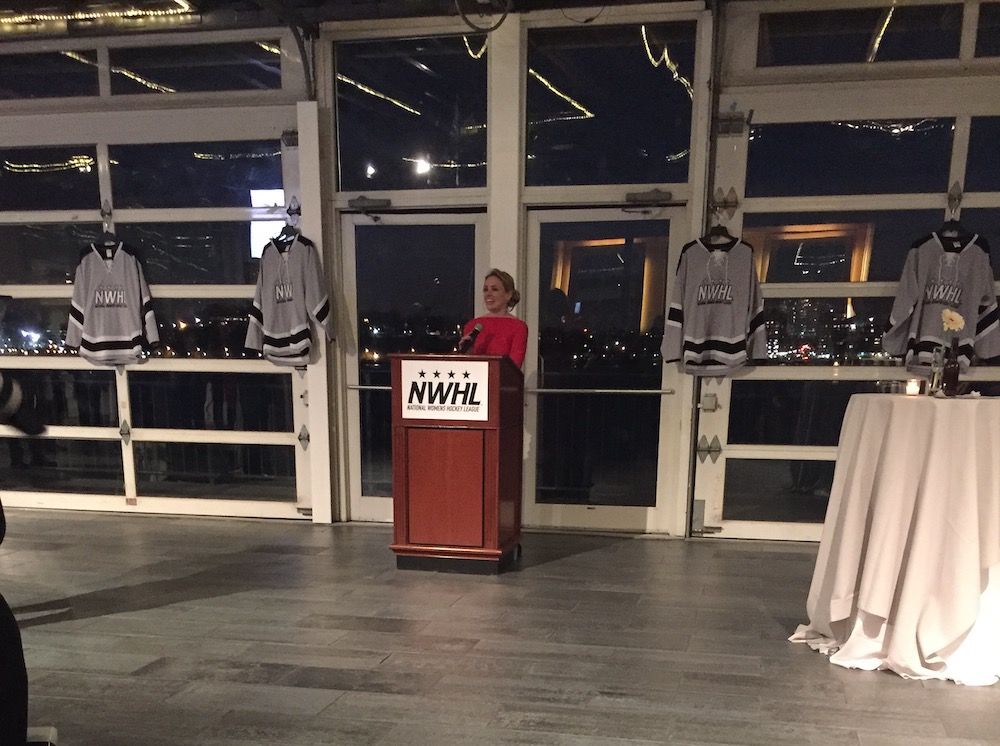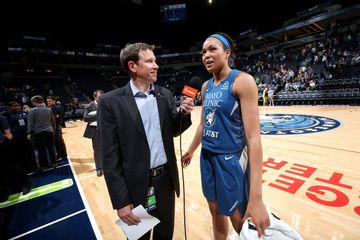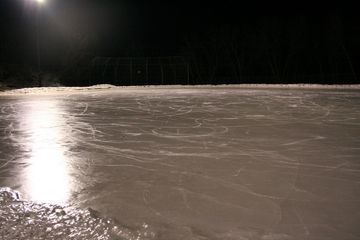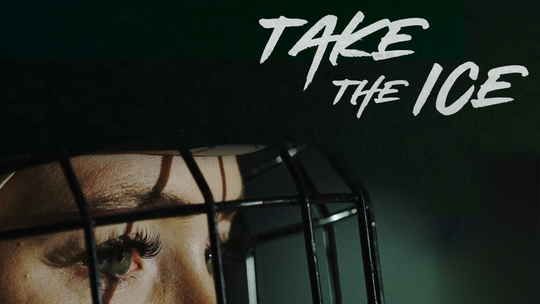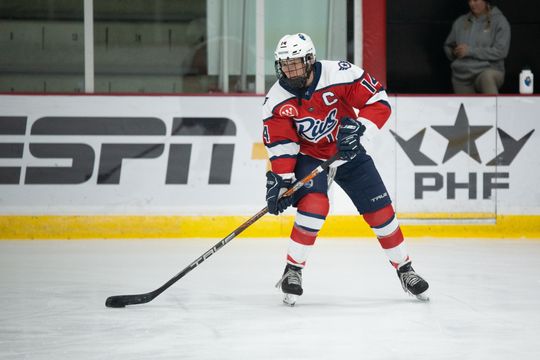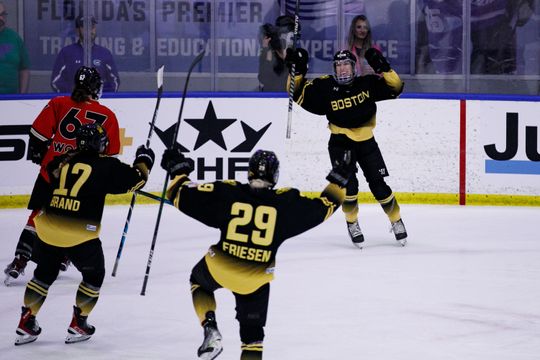In a press release distributed via LinkedIn on May 23, the NWHLPA announced that it had reached an agreement with the league on a form contract that "includes significant improvements to player benefits." The release lists what it describes as highlights of the agreement, including an expanded schedule, a revenue-sharing model, salary and per diem increases, a "more routine pay schedule," and a league option to extend the agreement into 2020-21.
The NWHL's salary cap for the season is $150,000 for a 24-game schedule, up from $100,000 in the 16-game 2018-19 season. The minimum salary has been reported at $4,000, from $2,500 last year. The per diem is $25 upfront with provisions to ensure post-game meals and breakfast in the case of overnight stays; previously, players paid their expenses out of pocket and were reimbursed $20 as a per diem within 15 calendar days of each away game. This information has been primarily distributed as percentages: a 50% increase to the cap, a 60% increase to the minimum salary, and a 25% increase to the per diem.
The 2019-20 NWHL contract does feature substantial gains. That's the problem.
Percentages are nice, but they don't have much material impact. Citing a 50% increase to the salary cap looks good, but it comes out to an average increase of less than $3,000 per player, and with the expanded schedule, the average per-game salary remains equal to last year's -- an increase of zero percent. An improvement of 60% sounds big, but $1,500 is hardly a life-changing amount, and for many, the minimum salary remains lower than the cost of playing. The 25% increase to the per diem amounts to five dollars.
The biggest point of emphasis has been on the insertion of a revenue-sharing arrangement: the contract "includes players in fifty-fifty sponsor revenue sharing after league operating expenses have been met." Players directly receiving 50% of league-wide sponsorship and media deals sounds brilliant on paper, but in a league that has never posted a profit and operates in deficit, it's not clear that this will materially amount to anything at all. Half of zero is, after all, still zero. Even if it does turn out to be a positive amount, the league currently has no monetary media deals and the NHL's $100,000 contribution remains the largest single influx of money -- at this point, the material impact of the revenue sharing arrangement appears minimal at best. (The NWHL has since clarified that the phrase "league operating expenses" refers not to overall league operating expenses, but to sponsorship activation costs.)
When every minor improvement is celebrated as a major milestone, it becomes difficult to even conceptualize achieving the kind of fundamental changes that would need to be made in order for women's hockey to be a viable professional path. But even if we accept that the small monetary gains in the 2019-20 NWHL contract are important improvements, there remain glaring concerns.
Most worrisome is the league option clause, which would enable the NWHL to unilaterally claim the rights to players even if they do not wish to remain in the league. Asked to clarify the provision, NWHLPA counsel Christina Simanca-Proctor provided the following explanation:
The League must notify the player in writing if it wishes to extend under the same terms before the end of the term (3/31/20). The league will be required to increase base salary by a minimum of 3% for an extension. A player may terminate the contract without cause upon 30 days written notice. It is important to note that in the event a player terminates without cause she is precluded from joining another professional North American League until September 28, 2020 (6 months from end of Term).
An increase of 3% is a standard annual raise meant primarily to account for inflation; as a result, the option clause allows the league the choice to renew players for another year with no veritable pay increase. The option is one-way, and if the league exercises the option, a player will be bound to those terms unless she terminates the contract in writing within 30 days of receiving notice. If a player chooses to terminate her contract, she will not be able to sign in any other professional league in North America until September 28, 2020. In practice, this clause would aim to prevent 2019-20 NWHL players from participating fully in the free agency period for a new league, should one be established. In theory, the NWHL could exercise the option on every single player who signs a 2019-20 contract in an attempt to force them to remain in the league.
Option clauses in sports aren't uncommon, but they tend to exist at the team level. The standard NWSL contract, for instance, gives teams the right to exercise an option to extend, which allows that team to retain a player's rights within the league. However, an NWSL player who terminates an extended contract still maintains the right to play in any other league. The NWSL is the only top-tier women's soccer league in North America, but in a team-option scenario, an extended player who wishes to play elsewhere can push for a trade. In a corporate context, non-compete clauses -- a contractual provision that prevents an employee from joining a competitor or starting their own business in a given industry for a certain time period -- are typically premised on protecting companies against the exposure of trade secrets, which can hardly be said to be the case here.
It's not clear that the conditions of termination attached to the NWHL's option clause would be legally enforceable, even if they tried. But whether they can or cannot legally prevent players from signing elsewhere is somewhat beside the point: the league put this in the contract. At the very least, including an option for the NWHL to unilaterally extend contracts and impose consequences should athletes refuse signals an attempt to fearmonger players into limiting their own choices.
The option clause also isn't the first time the NWHL has included questionably-enforceable provisions in its contract. The 2018-19 standard player contract includes a Non-Disparagement and Non-Interference section, as well as a Confidentiality section that specifically applies to the contents of the contract itself. The contract also claims that the obligations contained in both of these sections survive the termination of the agreement; in other words, that a player would be permanently prohibited from criticizing or even calling into doubt the NWHL or its commissioner, as well as from revealing the contents of her contract. Once again, whether a court of law would ever enforce these provisions is not the point: the NWHL put them in there for a reason, and their potential impact on players -- particularly young athletes without reliable access to legal counsel -- shouldn't be overlooked.
18. Non-Disparagement and Non-Interference
Player and Team each agree that, except as required by law, each will not directly or indirectly make, publish or communicate in any form or to any person or entity any disparaging or defamatory remarks, comments or statements, whether orally or in writing, by word or gesture, about each other, the other NWHL teams, the League Commissioner, or the League. For purposes of this paragraph, a disparaging statement is any communication which, if publicized to another, would cause or tend to cause the recipient of the communication to question the business condition, performance, reputation, integrity, competence, abilities, or good character of the person or entity to whom the communication relates. Player further agrees that, except as required by law, she will not intentionally or recklessly interfere with the future marketing, solicitation, or business of the Team or the League, including by attempting to destroy or impair the business prospects, value, or reputation of the Team, the other NWHL teams, the League Commissioner, or the League.
When founder Dani Rylan first officially announced the creation of the league to players in the spring of 2015, she also announced the NWHLPA, which she explicitly described as a union. "You will also have a say in how the league is run," she told prospective players, "Through a unionized players association, the NWHL-PA." (The NWHLPA is not, nor has it ever been, an accredited union -- it's not even a separately incorporated association, meaning that formal processes to enable the formation of a union were never undertaken.)
"The union," states an April 2015 release, "negotiates and enforces fair terms and conditions for employment for NWHL players." In a Freudian slip of a typo, the release also uses "NWHL" in place of "NWHLPA" in explaining that "the NWHL[PA] is to represent with integrity its members in negotiating the collective bargaining agreement with the NWHL and management of the various teams comprising of the NWHL." It's worth noting that the NWHLPA, which is not an accredited labor union, does not and has never had the authority to negotiate a collective bargaining agreement.
The details of the league that were sent to players in March of that year included salary levels that, since the 2016-17 cuts, the NWHL has never been able to return to. The information also indicated that all equipment would be provided and that players would be insured.
Four years on, only some equipment expenses are covered. More pressing, though, the league does not offer medical insurance. Despite being uninsured by the league itself, NWHL players are contractually required to provide proof of "major medical insurance coverage that is in full force and effect" and to maintain such coverage throughout the duration of their contract. For those without a sufficient policy in place, taking one out can involve annual premium costs as high as their total salary.
Still, the non-monetary aspects of the new contract do contain some improvements. Two sections which were unfavourable to players have been removed from the 2018-19 version. Those provisions involved players permanently waiving any and all rights to legal claims for injuries or damages arising from the performance of their contractual duties as professional athletes, and committing to indemnify the league and its affiliates against all third-party claims that may result from a breach of contract terms by the player. Having these removed is absolutely a positive, though a cynical reader may be inclined to ask why such provisions were there in the first place, particularly in a league that does not offer insurance.
The substantial gains in the 2019-20 NWHL contract are clear improvements from 2018-19, but they don't even bring things back to the levels they were at when the league was first founded. The league does not pay anywhere close to a living wage, and the per diem doesn't even reach half of the federal rate set by the General Services Administration. At this pace, achieving a genuinely professional environment within the NWHL would take years and years.
Moreover, some of the contract provisions indicate that the league is focused more on preserving the NWHL as an institution than promoting the genuine well-being of its athletes. If you are not materially able to offer conditions that will meet their needs, you'd best not be limiting their ability to pursue other options.
